GUATEMALA
Guatemala City

Guatemala City
Guatemala City
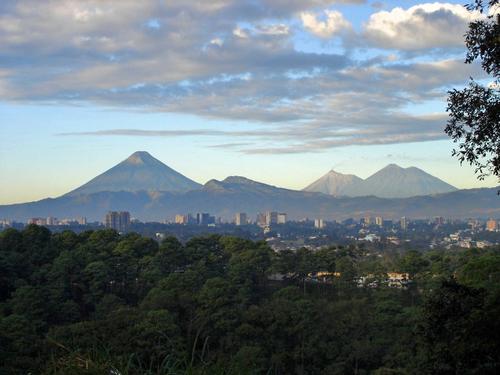 Guatemala CityPhoto: Alphabet Citizen in the public domain
Guatemala CityPhoto: Alphabet Citizen in the public domain
Guatemala City (the full name is La Nueva Guatemala de la Asunción) is the capital and largest city of the Republic of Guatemala. The official language is Spanish. An estimated 1,105,100 inhabitants live in the city today; according to the 2007 census, 3,700,000 lived in Guatemala's metropolitan area. The city is the economic, commercial and cultural centre and the seat of government of the Republic. The city is also the main gateway to the country.
In addition to a wide variety of restaurants, hotels, shops and a modern transport system (Trans metro), the city has a wide variety of, theatres, sports stadiums and museums (including some fine collections of Pre-Columbian art) and offers an ever-increasing number of cultural activities.
| advertisement |
| Hotels Guatemala City |
Location
The coordinates of Guatemala City are: 10°36'48' North latitude and 90°32'7' West longitude.
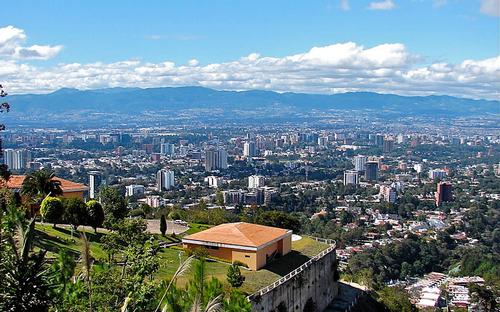 Location Guatemala CityPhoto: Rigostar CC 3.0 Unported no changes made
Location Guatemala CityPhoto: Rigostar CC 3.0 Unported no changes made
Guatemala City is located in the south-central part of the country in a valley called Valle de la Ermita at an altitude of 1,500 metres. Guatemala City is the most modern city in Central America.
Guatemala City is divided into 22 zones, each with its own streets and avenues. There are 25 zones, but zones 20, 22 and 23 are still under construction. The metropolitan area has recently grown very rapidly, swallowing up most of the surrounding municipalities. Zone 1 is the historic centre (Centro Histórico) and the core of the city with many important historic buildings.
Weather
Guatemala City has a subtropical highland climate due to its location in the tropics at an altitude of 1,500 metres and the moderating influence of this altitude. The weather in Guatemala City is generally temperate, being spring almost all year round. It occasionally gets hot during the dry season, but never as hot as in other seaside cities in the tropics.
The rainy season runs from May to October and the dry season from October to May. In Guatemala City there is often a lot of wind, which tempers the temperatures. The average annual temperature is 19° C to 22° C during the day and 14° C at night. The average annual highest temperature is 25.3° C and the average annual lowest temperature is 15.8° C. The annual rainfall is 2,078 mm. The average number of rainy days is 138 and the average number of hours of sunshine is 2174.
History
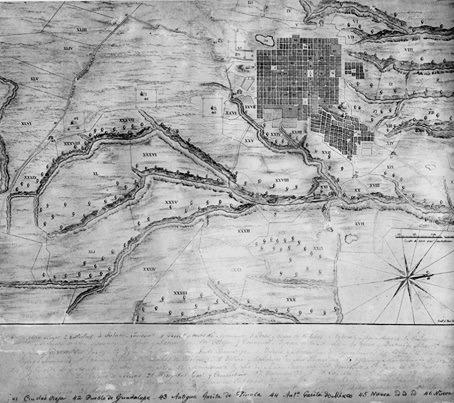 Map Guatemala City from 1821Photo: Public domain
Map Guatemala City from 1821Photo: Public domain
Guatemala City was founded in 1776, after an earthquake destroyed the former Spanish capital of Central America, "La Ciudad de Santiago de los Caballeros de Guatemala" (Antigua Guatemala). Modern Guatemala City has the ancient Mayan city of Kaminaljuyu within its borders. Kaminaljuyu was founded between 1200 and 1000 BC and the city remained inhabited for 2000 years until it was abandoned in the late Classic Period. It is one of the most remarkable American archaeological sites. The centre of Kaminaljuyu is a short distance from the oldest part of Guatemala City. In the late 20th century, the city grew around and over the ruins before they were legally protected. In Spanish colonial times, Guatemala City was a small city. It had a monastery called El Carmen, founded in 1629.
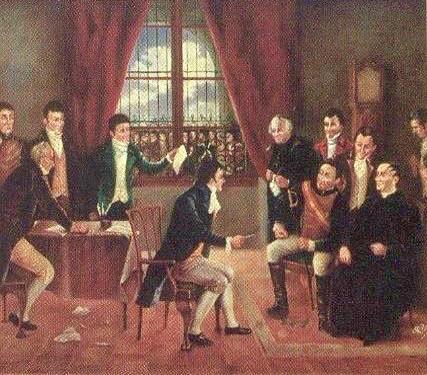 Signing of the Declaration of Independence in Guatemala CityPhoto: Public domain
Signing of the Declaration of Independence in Guatemala CityPhoto: Public domain
Guatemala City was the place to which the Declaration of Independence of Central America was transferred from Spain. Guatemala City became the capital of the United Provinces of Central America in 1821.
Guatemala City has been hit by severe earthquakes several times, the worst ones being recorded in 1917/1918 and in 1976. In September 2011, there was an earthquake of lesser magnitude near the city. Four volcanoes are visible from Guatemala City, two of them active. The nearest and most active is the Pacaya, which from time to time erupts considerable quantities of ash.
Sights
Guatemala City attracts many tourists throughout the year with its beautiful historical sites and active cultural life. There are many interesting museums, the most important in the whole country, as well as numerous galleries with all kinds of Guatemalan art: painting, engraving, sculpture and photography. Theatres present a wide cultural programme, with special attention to national playwrights.
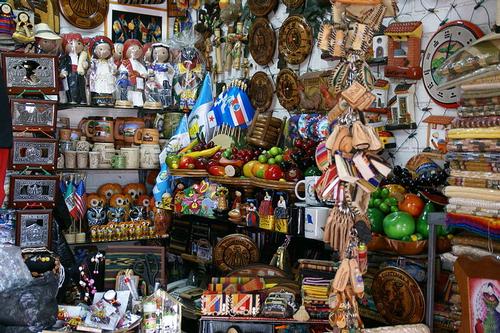 Arts and Crafts Market Guatemala CityPhoto: Hermann Luyken CC 3.0 Unported no changes made
Arts and Crafts Market Guatemala CityPhoto: Hermann Luyken CC 3.0 Unported no changes made
Zone 1 is the old historic centre with monumental buildings, such as the National Palace, the Presidential Palace and the city's cathedral. You will also find the main square and the Central Market here. The official buildings are in Zone 4, south of Zone 1. There are many banks, the national theatre and the tourist office (INGUAT). Further south are Zone 10 and Zone 9, divided by Avenida La Reforma. In Zone 10 you will find most of the chic hotels, restaurants, bars and shops. A small part of Zone 10 is called Zona Viva (the vibrant zone) because of its rich nightlife.
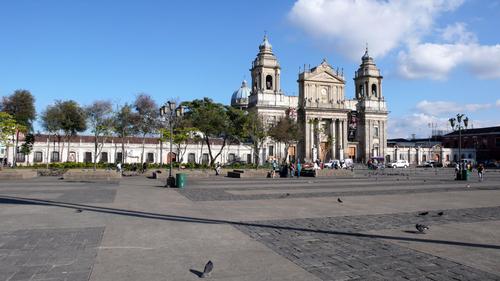 Catedral Metropolitana Guatemala CityPhoto: FDV CC 3.0 Unported no changes made
Catedral Metropolitana Guatemala CityPhoto: FDV CC 3.0 Unported no changes made
Old churches give the capital a special historical and architectural cachet. The most famous churches are: Cerrito del Carmen, Catedral Metropolitana, Calvario, Iglesia de Santo Domingo, Iglesia Yurrita and Iglesia de la Merced.
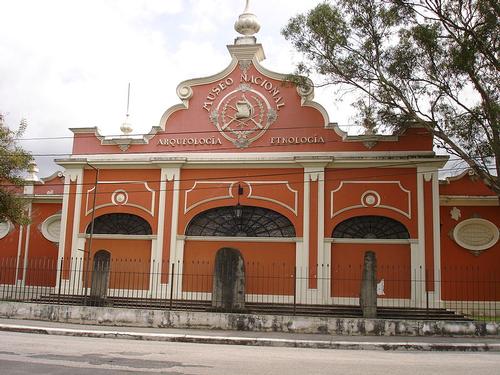 Archaeological and Ethnographic Museum Guatemala CityPhoto: Arielaasturias CC 3.0 Unported no changes made
Archaeological and Ethnographic Museum Guatemala CityPhoto: Arielaasturias CC 3.0 Unported no changes made
The Archaeological and Ethnological Museum is located in Zone 13. It is the most renowned museum with art and artefacts of the Mayan civilisation. There is a good exhibition on Mayan technology and clothing, while you can also admire impressive displays of jade, costumes, masks and indigenous textiles. The museum is also known for giant stone statues from the ancient excavations of Piedras Negras, Tikal and Uaxactun. The famous Tikal mask is the museum's masterpiece.
The Museum of Modern Art is located on 7 Avenida in Zone 13. It is directly opposite the Archaeological and Ethnological Museum and the entrance fee is valid for both museums. The word 'modern' is defined rather broadly. The museum includes art from 1800 onwards, but there are also many contemporary works of good quality. These include sculptures and avant-garde paintings by national artists, including Carlos Merida (1891-1984), Carlos Mauricio Valenti Perrillat (1888-1912) and Humberto Garavito (1897-1970).
Aurora Zoo is located in zone 13. There you will see local and exotic animals in a suitable environment. There are several sections, including Tropical, African Savannah and Asian and a petting zoo with some friendly farm animals. Popular animals include brown bears, crocodiles, elephants, giraffes, hippos, leopards, lions, tigers, water buffaloes and zebras.
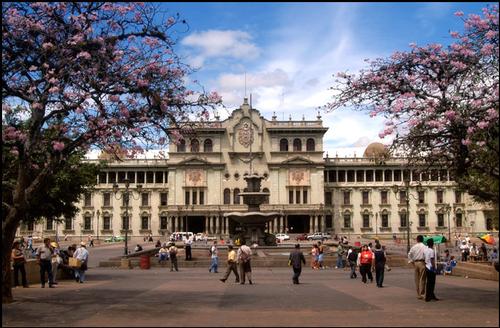 National Palace Guatemala CityPhoto: Rob Mercatante CC 2.5 Generic no changes made
National Palace Guatemala CityPhoto: Rob Mercatante CC 2.5 Generic no changes made
The Palacio Nacional is located in zone 1. The best way to visit this palace is with a guided tour. The tour takes about half an hour. You will see the courtyards and the official halls, decorative art works and the special murals.
The botanical garden (Jardines Botánico) is located in Zone 10 and is the most famous botanical garden in Central America. There is a wide variety of indigenous and exotic plant species. The grounds are part of the Universidad de San Carlos and you can see more than 1400 species of plants here. Many people combine a visit to the gardens with the Museum of Natural History, as this is also included in the price.
Tips
Very special to experience is the "burning of the devil". Every year, as a prelude to Christmas, all the houses are cleaned and on 7 December the rubbish is collected in the streets. According to local traditions, the devil resides in corners of houses, under beds and among the dirt. An effigy of the devil is often placed at the top of the piles of rubbish, then the piles are set on fire to ensure a devil-free Christmas. Marimba bands play at the burning and fireworks are certainly set off. This is done all over the country but the best place to witness it is in Guatemala City or Antigua.
Useful links Guatemala City
BBC Country ProfilesWorld Fact Book Explore all Countries
How to call
Last updated June 2025
Copyright: Team - The World of Info